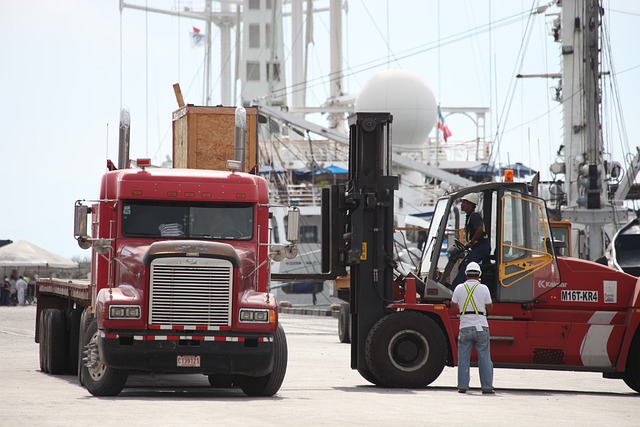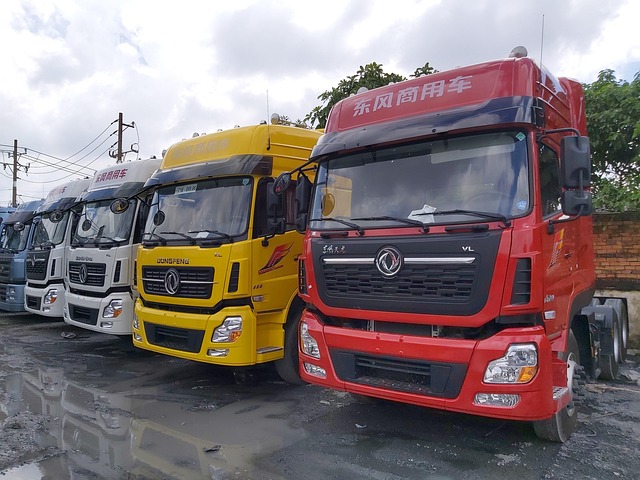Looking to register your car in California? This comprehensive guide breaks down the process step-by-step. First, understand the essential requirements for car registration in the Golden State, including vehicle eligibility and out-of-state transfers. Next, gather all necessary documents, such as proof of ownership and insurance.
For accurate data, learn how to utilize a VIN verifier to ensure your vehicle’s information is correct and reliable. Then, complete the California Vehicle Registration Application and submit it along with the required fees.
- Understand the Requirements for Car Registration in California
- Gather Necessary Documents for Vehicle Registration
- How to Use a VIN Verifier for Accurate Information
- Complete the California Vehicle Registration Application
- Submit Your Application and Pay the Registration Fees
Understand the Requirements for Car Registration in California

Before you begin the registration process, it’s crucial to understand what California requires for car registration. In this state, registering your vehicle involves several key steps and documents. One essential aspect is ensuring your car passes a safety inspection, which includes verifying the Vehicle Identification Number (VIN). This process, often referred to as a VIN inspection or VIN verification, checks that your vehicle meets safety standards.
For out-of-state vehicles, you may need to have a recent, valid inspection from your home state or a professional mobile VIN verifier can assist with this step. The California Department of Motor Vehicles (DMV) offers detailed guidelines and forms for each type of vehicle, so it’s important to gather all necessary documents before heading to the DMV. This includes proof of insurance, registration from another state, and perhaps even additional paperwork if your vehicle is a classic or custom model.
Gather Necessary Documents for Vehicle Registration

Before you start the registration process, make sure to gather all the essential documents required by the California Department of Motor Vehicles (DMV). One crucial piece is the Vehicle Identification Number (VIN) verifier, which can be obtained through a mobile VIN inspection or verification service. This unique 17-character code is located on the vehicle’s certificate of title and can also be found in the engine compartment or under the glove box lid.
Additionally, you’ll need proof of insurance, your driver’s license or state ID, and the previous owner’s signature if applicable. It’s recommended to double-check with the DMV for any additional documents they may require, ensuring a smooth registration experience.
How to Use a VIN Verifier for Accurate Information

Using a Vehicle Identification Number (VIN) verifier is an essential step in ensuring accurate information when registering your car in California. VIN verifiers provide critical insights into a vehicle’s history, including its original manufacturer, model year, and optional features. This process becomes especially important for used car buyers to avoid potential fraud or undisclosed modifications.
A reputable VIN verifier service can offer both online and mobile vin verification options, such as a mobile vin inspection. These services allow you to quickly validate the vehicle’s details by entering its unique 17-character VIN number. The results will typically include a detailed report on the car’s history, accident records, and any reported issues, empowering you to make informed decisions before finalizing the registration process.
Complete the California Vehicle Registration Application

To begin the registration process for your vehicle in California, you’ll need to complete the California Vehicle Registration Application form, often referred to as Form DV305. This form is a crucial step and requires accurate information about your vehicle and yourself. Make sure to have your vehicle’s Vehicle Identification Number (VIN) ready, as it’s a critical piece of data that needs verification during the registration process.
A VIN verifier is a valuable tool in this process, especially with modern technologies offering convenient methods like mobile vin inspection. You can either conduct a traditional vin inspection at a designated location or use a reliable mobile service to ensure your vehicle’s history is accurate and clear. This step is essential as it helps prevent fraud and ensures you’re complying with California’s registration requirements.
Submit Your Application and Pay the Registration Fees

After completing your vehicle’s inspection and gathering all necessary documents, it’s time to submit your application for registration. This process typically involves visiting a California Department of Motor Vehicles (DMV) office or using their online services, depending on your preference. Ensure you have your vehicle’s Vehicle Identification Number (VIN) verifier ready, as this is a crucial step in the registration process.
When submitting your application, be prepared to pay the corresponding registration fees. These fees can vary based on factors such as your vehicle’s age and type. You can opt for various payment methods, including cash, credit card, or debit card. Consider using a mobile vin inspection service or a reliable VIN verifier to streamline this process and ensure accuracy, especially if you’re not comfortable with the administrative aspects of registration.
Registering a car in California is a straightforward process, but understanding the requirements and gathering the right documents is key. Utilizing a VIN verifier can ensure accurate information for a seamless registration experience. By completing the application form and paying the necessary fees, you’ll be on your way to legalizing your vehicle in no time. Remember to keep all documents organized for future reference.
